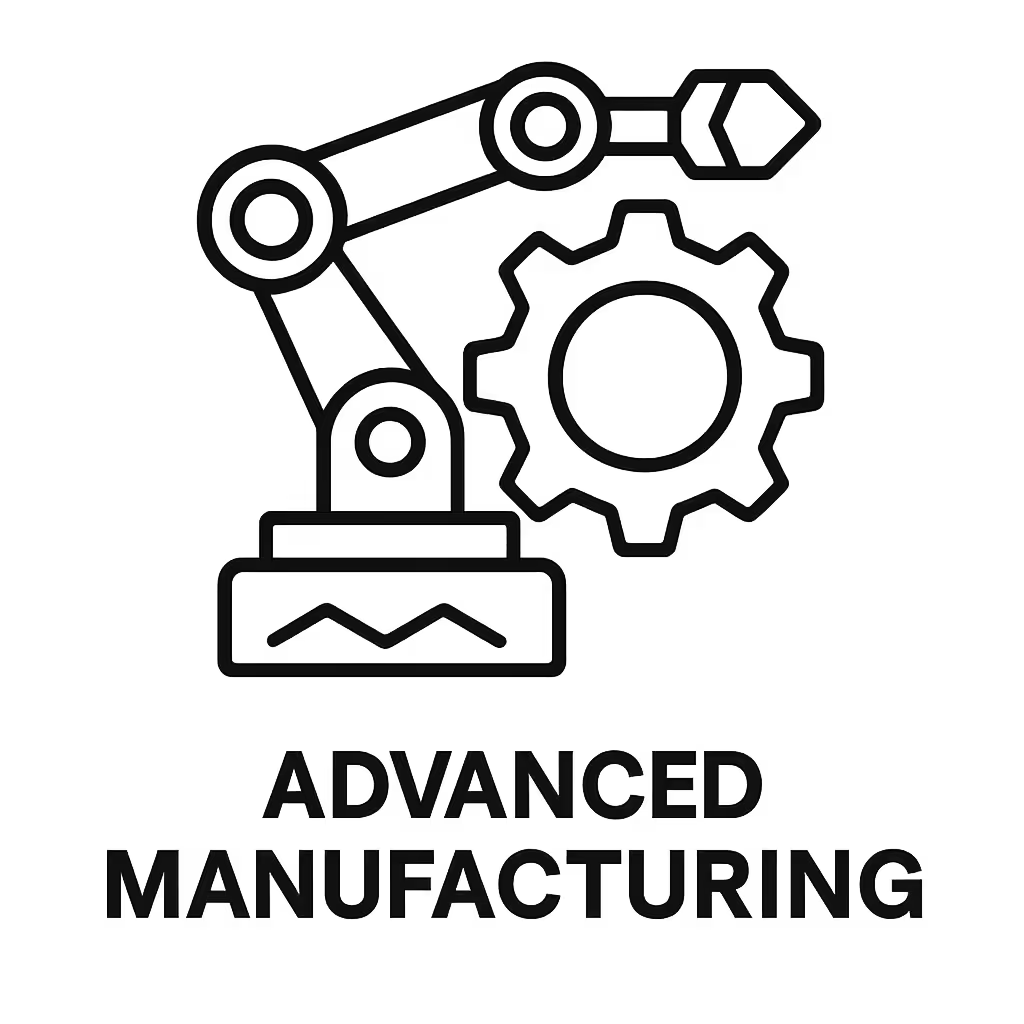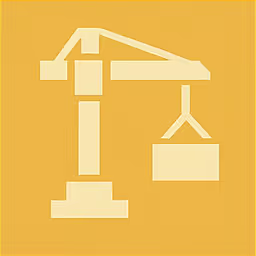Production & Automation
Learning Objects
Dive into Wisc-Online’s rich collection of learning objects — bite-sized, interactive, and designed for real learning. These modular digital tools include animations, drag-and-drop exercises, quizzes, videos, and more. You can explore topics across STEM, arts, humanities, career skills, and beyond. Each learning object is crafted to help learners actively engage with content—reviewing, applying, self-checking—in a way that’s flexible and self-paced.
Filter
Thank you! Your submission has been received!
Oops! Something went wrong while submitting the form.
Learning Object
AND Gates (Screencast)
In this learning activity you'll describe the operation of an AND gate by using a truth table, a waveform diagram, a Boolean Algebra equation, a switch analogy, and a written definition.
Tags +
boolean, dd0004, diagram, equation, gate, table, truth, waveform
Acceleration and Deceleration Adjustments
Tags +
Adjustable Parallels
This video will demonstrate using adjustable parallels to measure a part.
Tags +
Machine Tool, shop
An Introduction to Motor Control Circuits
The learner will understand the operation of motor control circuits used to start and stop three-phase motors.
Tags +
circuitry control transformer, control circuit control, holding contact, latching contact, motor starter, overload, overload contacts, overload heater, sealing contact, start-stop control, three-phase disconnect, three-phase power line, transformer
Analog Position Control (Screencast)
In this animated object, learners examine an analog closed-loop feedback system that uses potentiometers to control the position of a gear rack.
Tags +
analog, application, circuit, closed, control, feedback, loop, position, postion
Appropriate Use of Welding Coupons
This module will guide you thru the use of welding coupons in the welding process.
Tags +
GMAW, Welding
Armature Reaction
In this animated activity, learners study how the magnetic field of an armature can distort the DC motor's main magnetic field. A brief quiz completes the object.
Tags +
armature, dc motor, magnetic field, stem
Boyle's Law (Screencast)
Learners apply the principles associated with Boyle’s Law.
Tags +
boyles, law, pressure, temperature, volume
Calculating Horsepower, RPM, and Torque
In this animated and interactive object, learners examine the formula for horsepower and work practice problems.
Tags +
drives, hh0001, horsepower, jj0001, mechanical, motors, power, rpm, shafts, torque, work
Calculating Lengths for Tube Bending
The learner reads an explanation of how to determine lengths for tubing and pipe bending and then performs calculations in an interactive exercise. Two methods for determining angle bends are shown. A calculator is required.
Tags +
bender, bending, forming, pipe, tube, tubing
Calls and Unconditional Jumps
Robotic welding is an increasingly popular tool used in industrial welding applications. Knowing how to program the robot is key. Explore how to improve your programming skills by using calls and unconditional jumps in this learning activity.
Tags +
call, jump, label, loop, robot, weld, welding
Cycle Time and One-Piece Flow
In a series of three interactive exercises, learners explore the relationship between process cycle time and defect detection, and between process cyle time and smaller batch sizes. The techniques of lean/JIT are applied to achieve the continuous improvement (kaizen) goal of reducing inventory by pursuing one-piece flow.
Tags +
batch. batch production, cycle time, decrease inventory, defect, efficiency, JIT, just in time, just-in-time, Lean, less storage, one piece, one-piece, pizza, single unit
Derivative Control Mode Analogy (Screencast)
In this animated object, learners view a race of two boats as an example of how the derivative function of a PID controller shortens the time duration of an operation.
Tags +
control, derivative, intregral, mode, pid, proportional
Designing a Ladder Diagram
In this animated object, learners examine the design of a ladder circuit that provides manual control to a water pumping system. Students also study modifications to the circuit as the complexity of the system increases.
Tags +
circuits, design, ladder circuit, ladder diagram, ladder diagram design, stem, switch
Displacement Level Sensors
In this animated object, learners study how displacement level sensors are used to measure the level of liquid in a tank.
Tags +
displacement, level, sensor, sensors
Doosan Machine Setup and Operation
This video will walk you through the Setup and operation of the Doosan CNC Turning Center Machine.
Tags +
Classroom resources, CNC Turning Center, Control panel, Cutting feeds, Doosan, Educational resources, eLearning, G-code programming, Interactive learning, Learning activities, Machine maintenance, Machine operation, Machine setup, Online learning, Safety procedures, Spindle speeds, Student engagement, Study aids, Tool offsets, Tooling, Turning operations, Workholding, Workpiece offsets
Electrical Switches & Pushbuttons
In this learning activity you'll review the operation and schematic symbols of various types of switches and push buttons used for electronic circuits.
Tags +
cc0002, diagram, pushbuttons, schematic, switches, switching
Fundamentals of a DC Motor
Learners study the interaction between the conductors of the stator and the armature inside a DC motor, which causes the shaft to rotate. A short quiz completes the activity.
Tags +
armature, conductors, dc motor, motor basics, stator
Future-State Mapping
The learner reads an explanation of all of the elements that comprise a future-state map. A map is shown.
Tags +
enterprise, future, improvement, lean, management, manufacturing, map, mapping, process, state, stream, value
Heat Transfer: Conduction, Convection, Radiation
In this animated activity, learners explore three major methods of heat transfer and practice identifying each.
Tags +
Animated activity, College-level thermodynamics, Conduction, Convection, Educational resources, Energy transfer, Fluid dynamics, Heat exchange, Heat flow, Heat sinks, Heat sources, Heat transfer, High school physics, Interactive learning, Online learning., Radiation, Science animation, STEM education, Temperature difference, Thermal conductivity, Thermal energy, Thermal equilibrium, Thermal insulation, Thermodynamics
Hydraulic Cylinder Speed (Screencast)
In this screencast, learners examine why the piston of a hydraulic cylinder extends slower than it retracts. A brief quiz completes the activity.
Tags +
cylinder, ff0002, hydraulic, piston, rod, speed
Hydraulic Pressure Switch Applications
This animated lesson demonstrates hydraulic pressure switch applications when the switch is connected to a ladder circuit to operate in a hydraulic system.
Tags +
hydraulic, hydraulic pressure switch applications, pressure
Hydrostatic Pressure (Screencast)
In this animated object, learners read about hydrostatic pressure and observe how it is used to measure the level of a material in a container.
Tags +
hydrostatic, level, measurement, measurements, pressure
Inductive Proximity Sensors (Screencast)
Learners examine the operation of an inductive proximity sensor in this animated object. A brief quiz completes the activity.
Tags +
inductive, inducttive, prox, proximity, sensor, sensors, switch, switches
Interlocking Ladder Diagrams (Screencast)
Learners examine how a ladder logic circuit becomes latched when a normally open pushbutton is momentarily pressed.
Tags +
circuit, diagram, interlock, interlocking, ladder, logic
Lean Terminology
The learner will understand the meaning of terms and acronyms commonly used in a lean production system.
Tags +
heijunka, hoshin kanri, jidoka, kanban, kraizen, lean manufacturing, muda, mura, muri, poka-yoke, smed, tpm, vsm
Line Symbols (Screencast)
Learners examine the different types of lines used on a P&ID diagram and the types of connections they represent. They test their knowledge in a matching exercise.
Tags +
control, diagram, line, p&id, process, symbols
Mechanical Advantage (Screencast)
Learners apply lever ratios to calculate the mechanical advantage in basic mechanisms.
Tags +
drives, engineering, force, gear, jj0002, levers, linkages, machines, mechanical, pulley, ratio, sprocket
Motor Action (Screencast)
In this screencast, learners examine the interaction between a conductor that represents a motor armature and a magnetic field that represents a motor’s main field. This interaction causes the shaft to turn.
Tags +
action, electrical, motor, motors
Motor Control Circuits
Learners examine an electric motor control circuit that uses a motor starter module. This activity has audio content.
Tags +
AC motor, control circuits, Electric Motor, motor, motor starter, overloads, three-phase motor, transformer
O.D. Turning on a Lathe
This video clip shows the outside diameter turning on an engine lathe.
Tags +
lathe, turning
Ohm's Law: Current
Learners study animated rheostat settings that show how current flow is inversely proportional to resistance. Ten review questions complete the learning object.
Tags +
circuit, circuits, current, law, law:, ohms, series
Ohm's Law: Power
Learners study animated rheostat settings that show how varying the current flow affects the amount of power that is dissipated in a series circuit. Nine review questions complete the activity.
Tags +
circuit, law:, ohms, power, rheostat, series, watts
Op Amps 1: The Operational Amplifier
The learner will examine the basic characteristics of the operational amplifier integrated circuit and solve for Vout.
Tags +
Op Amps 2: The Non-Inverting Amplifier
The learner will describe the non-inverting op-amp configuration and calculate the circuit gain.
Tags +
Op Amps 3: The Inverting Amplifier
Describe the inverting op-amp configuration and calculate the circuit gain.
Tags +
amplification configuration, amplifier, bandwidth, circuit gain, electronics, op-amp, output limits, resistor, voltage
Op Amps 4: The Op Amp Buffer
Understand the op-amp buffer configuration and calculate basic circuit impedance.
Tags +
amplifier, buffer, buffer configuration, circuit, electronic, op amp, vf, voltage divider, voltage follower
Optical Encoders (Screencast)
Learners examine the internal components of an optical encoder used in automated manufacturing applications. A brief quiz completes the animated activity.
Tags +
encoder, encoders, optical
Oscilloscope Frequency Measurements (Screencast)
Learners read a description of how an oscilloscope is used to measure the frequency of a sine wave.
Tags +
aa0002, frequency, measurements, oscilloscope
Oscilloscope Phase Shift Measurements (Screencast)
In this animated lesson, learners follow the steps required to read the phase shift difference in degrees between two AC waveforms.
Tags +
aa0002, measurements, oscilloscope, oscilloscopes, phase, shift
PID Control (Screencast)
Learners examine an animated motion-controlled robotic arm and observe the operation of a PID (Proportional-Integral-Derivative) control that makes movements quickly without overshooting or having a steady-state error. This activity has audio content.
Tags +
control, derivative, integral, modes, pid, proportional
PLC Counter Instructions
In this animated object, learners examine the operation of up-counters and down-counters for a programmable controller. A brief quiz completes the activity.
Tags +
controller, controllers, counter, counters, logic, plc, plcs, programmable
PLC Output Modules
The learner will understand the operation and configuration of various types of PLC output modules and how they're used.
Tags +
controller, logic controller, plc, programmable, relay contact output, sinking output, sourcing output
PLC Timer Instructions
Learners examine the animated Timer-On Delay instruction and the Timer-Off Delay instruction of a PLC timer. A brief quiz completes the activity.
Tags +
controller, controllers, logic, plc, programmable, timer, timers
Parallel Capacitance: Practice Problems
Learners solve six problems determining the total capacitance of a parallel circuit. Immediate feedback is provided.
Tags +
capacitors, dc, electronics, series
Parallel Circuit Analysis Practice Problems Part 1
In this interactive object, students work parallel circuit analysis problems. They solve for total resistance and current, the current through each resistor, the voltage across each resistor, and the power dissipated.
Tags +
analysis, circuit, parallel
Parallel Circuit Analysis Practice Problems Part 2
In this interactive object, students work 11 practice problems and solve for total resistance and current, the current through each resistor, the voltage across each resistor, and the power dissipated.
Tags +
analysis, circuit, parallel
Parallel Circuit Analysis Practice Problems: Circuit #10
In this interactive object, learners solve for total resistance and current, the current through each resistor, the voltage across each resistor, and the power dissipated by each resistor.
Tags +
analysis, dc, parallel
Parallel Circuit Analysis Practice Problems: Circuit #3
In this interactive object, learners solve for total resistance and current, the current through each resistor, the voltage across each resistor, and the power dissipated by each resistor.
Tags +
analysis, dc, parallel
Parallel Circuit Analysis Practice Problems: Circuit #4
In this interactive object, learners solve for total resistance and current, the current through each resistor, the voltage across each resistor, and the power dissipated by each resistor.
Tags +
analysis, dc, parallel
Parallel Circuit Analysis Practice Problems: Circuit #5
In this interactive object, learners solve for total resistance and current, the current through each resistor, the voltage across each resistor, and the power dissipated by each resistor.
Tags +
analysis, dc, parallel
Parallel Circuit Analysis Practice Problems: Circuit #6
In this interactive object, learners solve for total resistance and current, the current through each resistor, the voltage across each resistor, and the power dissipated by each resistor.
Tags +
analysis, dc, parallel
Parallel Circuit Analysis Practice Problems: Circuit #7
In this interactive object, learners solve for total resistance and current, the current through each resistor, the voltage across each resistor, and the power dissipated by each resistor.
Tags +
analysis, dc, parallel
Parallel Circuit Analysis Practice Problems: Circuit #8
In this interactive object, learners solve for total resistance and current, the current through each resistor, the voltage across each resistor, and the power dissipated by each resistor.
Tags +
analysis, dc, parallel
Parallel Circuit Analysis Practice Problems: Circuit #9
In this interactive object, learners solve for total resistance and current, the current through each resistor, the voltage across each resistor, and the power dissipated by each resistor.
Tags +
analysis, dc, parallel
Pascal's Law and Hydraulics
Using the principle of Pascal's Law, the learner will interpret the gauge readings in a hydraulic system to determine when the system is operating properly under various load conditions and when there is a defect.
Tags +
hydraulic gauges, hydraulic troubleshooting, hydraulics, hydraulics measurements, pascal, pascal's law
Phase Relationships Between Line-Neutral and Line-Line Voltages
Learners view a demonstration showing that line-neutral voltages and line-line voltages are not in-phase with each other, but have a definite 30-degree relationship.
Tags +
degree, line, phase, relationship, three
Phase-Splitting of Single-Phase Motors
The learner will understand the two methods used to create a phase shift in current between two windings.
Tags +
ac motors, armature magnetic field, cap start motor, capacitance, current, induction motor, magnetic fields, non-cap start motor, rotating stator, run winding, split-phase motor, start winding, torque, windings
Pneumatic Directional Control Valves (Screencast)
In this animated object, learners examine the operation of two-way, three-way, and four-way directional control valves used in pneumatic systems.
Tags +
control, directional, pneumatic, pneumatics, valves
Potentiometer Application
In this animated and interactive object, learners examine how a variable voltage is obtained from a variable resistor that is wired as a potentiometer across a fixed DC power supply.
Tags +
cc0002, pot, potentiometer, resistor, variable
Pressure Measurement Scales (Screencast)
Learners compare the three scales used in pressure measurements: gage, absolute, and vacuum. A brief quiz completes the activity.
Tags +
abolute, absolute, gage, measurement, measurements, pressure, scales, vacuum
Problem Solving: Using a Flow Chart
You will learn how to us a flow chart to describe the process actions and decisions to find a solution.
Tags +
critical core skills, flowchart examples, how do i use a flowchart?, problem solving, soft skills, what is a flowchart?
Problem Solving: Using a Run Chart
You'll understand how to use a run chart to describe a manufacturing problem.
Tags +
how do i use a run chart, problem solving, run chart examples, run chart homework, what is a run chart
Process Variation
In manufacturing, controlling the production process is critical. Part of this control is knowing when to make adjustments and when to let the line run. Step onto the production line in our manufacturing plant and learn what process variation is and how it impacts your bottom line.
Tags +
adjustments, control, manufacturing, Metrology, production
Programming a PLC Timer
In this animated object, learners examine the types of information to enter, and the sequence of steps required, to program a programmable logic controller (PLC) timer.
Tags +
controller, controllers, logic, plc, plcs, programmable, programming, timer, timers
Quick-Return Mechanism Velocity Calculations
In this animated and interactive object, learners calculate the maximum velocity of the work stroke and the return stroke.
Tags +
bar, crank, engineering, four, jj0003, linkages, mechanical, mechanism, quick, return, slider, stroke, velocity, work
RC Time Constant
In this animated object, learners observe the voltage on a capacitor at various time constants when it either charges or discharges. Students then answer questions in the categories of Identify, Compare, and Compute.
Tags +
capacitor, capacitors, charge, charging, circuit, constant, constants, discharge, discharging, network, rc, series, time
RL Time Constant
Learners read an explanation of the RL time constant and examine the formula for calculating the instantaneous current value. The current is graphed as it climbs to maximum or drops to zero. Note* In the formulas in this module, the Greek letter epsilon should be the mathematical constant 'e'.
Tags +
constant, dc, electronics, inductance, inductor, L/R time constant, tau
RPM of AC Motors
Learners study factors that affect the synchronous speed of an AC motor: the applied AC frequency and the number of stator poles.
Tags +
ac motor, motor speed, number of poles, pole pairs, rpm, synchronous speed
Resistor Color Code Description
In this interactive activity, students read about the colored stripes on a resistor and interpret the placement of those colors to determine the value of four-band resistors.
Tags +
cc0001, code, color, dc, electronics, resistor
Reversing the Rotation of DC Motors
Learners view animations showing how to change the connections to cause a DC motor to reverse its rotation. A short quiz completes the activity.
Tags +
dc, direction, motor, motors, reversing, rotation
Review: Cutting Speeds & RPM Calculations for Drilling
This review tests the student's knowledge of cutting speeds and RPM calculations for drilling machines.
Tags +
drill
Robotic Welding Instructions
The learner will gain an understanding of how a robot uses welding instructions to perform tasks. This learning activity includes video.
Tags +
linear motion incorrect weld end, linear motion while welding, linear motion without welding, robot, welding data parameters, welding instruction, welding instructions, welding robot
Rotating Vector Representation of the Sine Function
The learner will be able to represent steady-state AC sinusoidal signals using phasors, which will lead to a simplified technique of analyzing AC circuits in a very similar way that we analyze DC circuits.
Tags +
circuit, circuit analysis, phase vector, phasor, sine wave, steady-state
SMAW Discontinuities
In this activity, we'll examine some common discontinuities associated with SMAW welding and review ways to prevent these problems from happening.
Tags +
SMAW Electrode Characteristics
In this learning activity, you’ll explore the characteristics of common, carbon steel shielded metal arc welding electrodes, which fall under American Welding Society specification A5.1.
Tags +
SMAW Electrodes, welding electrodes, Welding specifications, what's the difference between SMAW electrodes
SMAW Setup Guide
SMAW Setup Guide
Tags +
Schematic Diagram Symbols
In this learning activity you'll review various types of common components used in electronics and view their schematic diagram symbols.
Tags +
cc0002, components, diagram, drawings, electronic, schematic, symbols
Sectional Views
In this interactive object, learners examine sectional views used in engineering drawings. The sections shown are full, half, offset, aligned, revolved, and broken-out. Learners match drawings of sectional views with the names of the views.
Tags +
aided, aligned, arrow, blueprint, broken, computer, cutting, design, detail, dimensional, drafting, drawings, engineering, front, full, half, hatch, isometric, line, model, object, out, pictorial, plane, profile, reading, revolved, sections, side, sketch, three, top, two, view, visualize
Selector Switch Labeling
In this animated object, learners examine the method of interpreting the truth tables for two-position and three-position selector switches on ladder logic circuit diagrams.
Tags +
circuits, diagrams, labeling, ladder, logic, selector, switch, switches
Series Capacitance
Students view the steps for determining the total capacitance for a series circuit. They then work practice problems.
Tags +
aa0003, capacitance, capacitors, dc, electronics, series, total
Series Circuit Analysis Practice Problems Part 2
In this interactive object, learners solve additional problems involving total resistance and current, the current through each resistor, the voltage across each resistor, and the power dissipated.
Tags +
analysis, dc, series
Series Inductance
In this learning activity you'll calculate the total inductance of a series circuit.
Tags +
aa0004, circuit, inductance, inductor, inductors, series
Series Motor Runaway (Screencast)
Learners consider the changes inside a series motor that could cause it to break apart if the load was disconnected. A quiz completes the activity.
Tags +
away, dc, motor, motors, run, series
Series-Parallel Circuit Analysis Practice Problems: Circuit #5
Learners examine a series-parallel circuit and solve 14 problems related to voltage, current, and power. A help screen is provided.
Tags +
dc, electronics, parallel, practice, problems, series
Series-Parallel Circuit Analysis Practice Problems: Circuit 2
In this interactive object, learners solve a series-parallel DC circuit analysis problem. Immediate step-by-step feedback is given.
Tags +
analysis, circuit, dc, parallel, series
Series-Parallel Circuit Analysis Practice Problems: Circuit 3
In this interactive object, learners solve a series-parallel DC circuit analysis problem. Immediate step-by-step feedback is given.
Tags +
analysis, circuit, parallel, series
Series-Parallel Circuit Analysis: Practice Problems Circuit 1
In this interactive object, learners analyze a series-parallel DC circuit problem in a series of steps. Immediate feedback is provided.
Tags +
analysis, circuit, dc, parallel, series
Series-Parallel DC Circuits Analysis
Learners follow a methodical approach for the dc analysis of series-parallel circuits.
Tags +
analysis, dc, parallel, series, STEM
Series-Parallel Practice Problems Circuit 4
In this interactive object, learners work 12 problems dealing with dc circuit analysis.
Tags +
dc, parallel, practice, problems, seris
Shop Safety Review Sheet
The student takes a 14-question quiz of shop safety.
Tags +
quiz, safety, shop
Single-Phase Motors: Introduction to Phase-Splitting
Learners will understand how the interaction of the armature magnetic field and the rotating stator field cause the rotor of a single-phase AC motor to turn.
Tags +
ac, electrical, motors, phase, single, split
Sizing Motor Overloads
Learners use the National Electrical Code to determine the size of a motor overload protection device.
Tags +
device, devices, moter, motor, motors, overload, overloads, protection, sizing
Sizing a Sanitary Sump (Single Pump)
Learners follow steps to size a sanitary sump using the Wisconsin Plumbing Code. A quiz completes the activity.
Tags +
non, piping, public, sizing, supply
Sizing a Tank Type Water Heater
In this interactive learning object, the learner practices sizing a tank-type water heater for one- and two-family residences, townhouses, and apartments with individual water heaters.
Tags +
plumbing, tank water heater, water heater sizing
Sizing an Automatic Car Wash Interceptor
Learners follow steps for sizing a car wash interceptor according to the Wisconsin Administrative Plumbing Code. A quiz completes the activity. (Hover your mouse in lower right corner to see the next button)
Tags +
interceptors
Sizing an Interior Grease Interceptor (Screencast)
Learners follow steps to size an interior grease interceptor in a plumbing system that is collecting deleterious materials from a commercial kitchen sink. A brief quiz completes the activity.
Tags +
plumbing
Sizing an Interior Grease Interceptor for a Commercial Dishwasher
Learners follow steps to size an interior grease interceptor for a commercial dishwasher. This animated learning object presents plumbing code requirements and industry standards. A brief quiz completes the activity.
Tags +
grease, traps
Squaring a Part
This video will guide you through the process of squaring a part on a milling machine.
Tags +
Bridgeport, Machine Tool, Mill, Milling Machine, parts, square
Squaring the Toolhead
In this video, we’ll go over the necessary steps to square the toolhead on a Bridgeport mill.
Tags +
Bridgeport, Machine Tool, Mill, Milling Machine









